Its a cat and mouse game across the stars as the Enterprise becomes the first ship to meet the Romulans in a century. But first, it is time for a wedding.
Angela Martine and Robert Tomlinson are getting married aboard the Enterprise as it is patrolling the Earth outposts that guard the Romulan Neutral Zone. Kids, marriage can be a wonderful thing, but this isn't the best way to get one started.
Outposts Two and Three have gone silent and the wedding is stopped as we learn that Outpost Four is under attack.
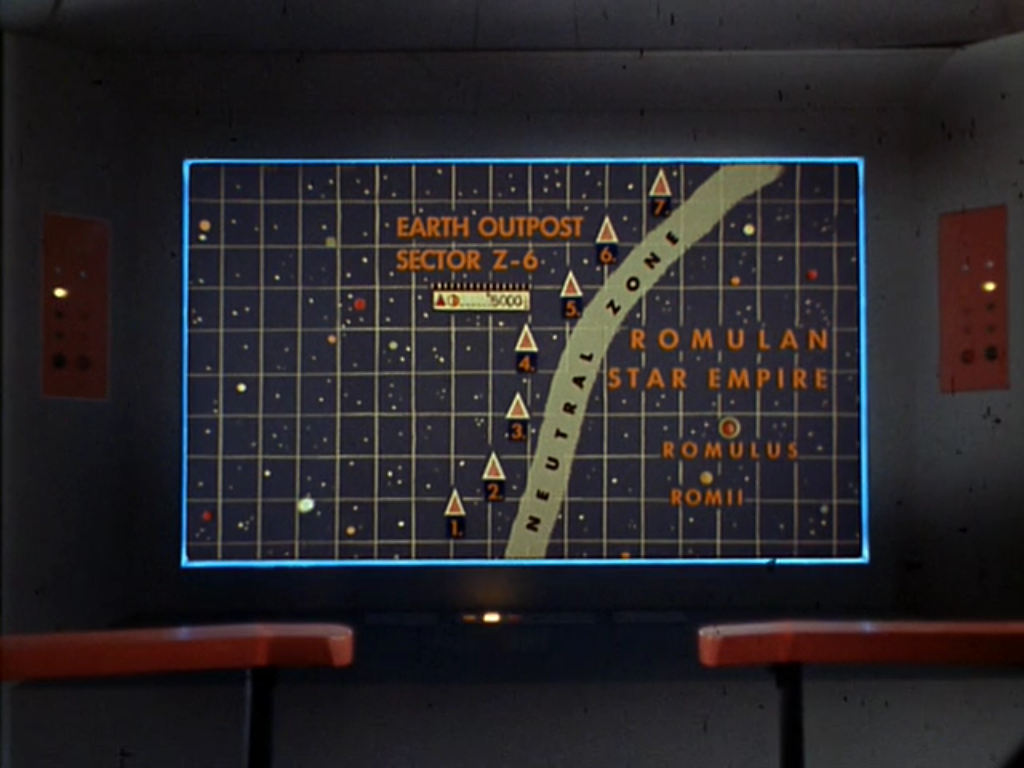 |
| A dandy map of the Outposts along the Romulan Neutral Zone. |
The Enterprise establishes communications with Commander Hansen on Outpost Four. He is not having a good day.
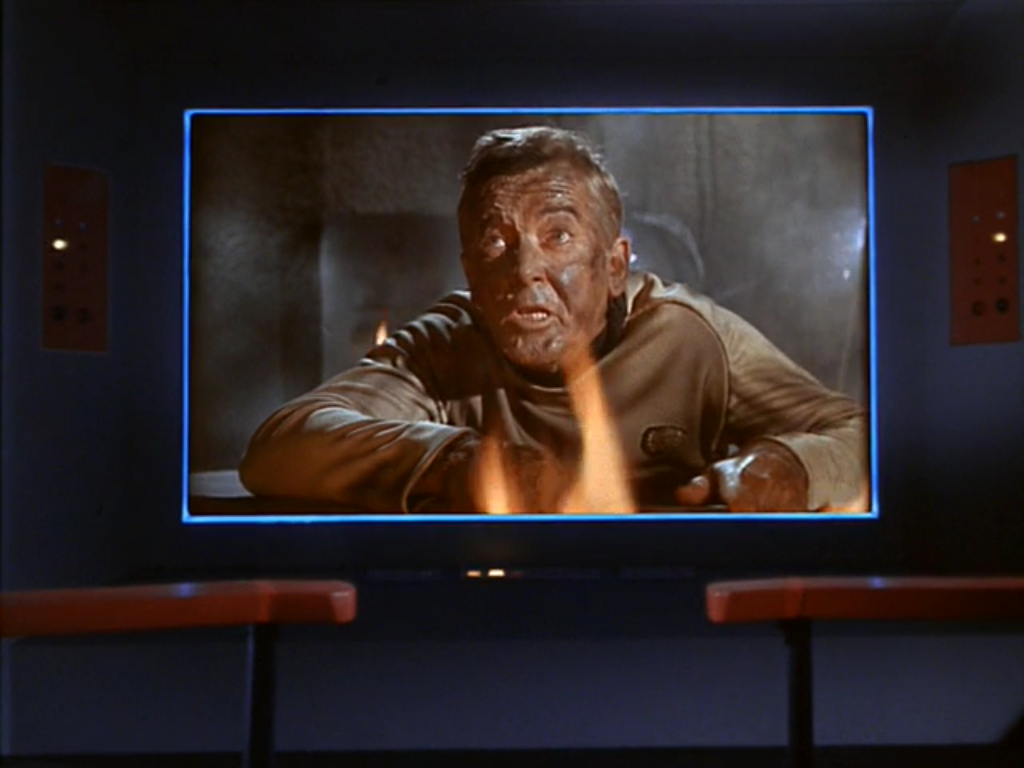 |
| "We're a mile deep on an asteroid. Almost solid iron. And even through our deflectors, it did this." |
A ship appears, fires another shot and disappears again.
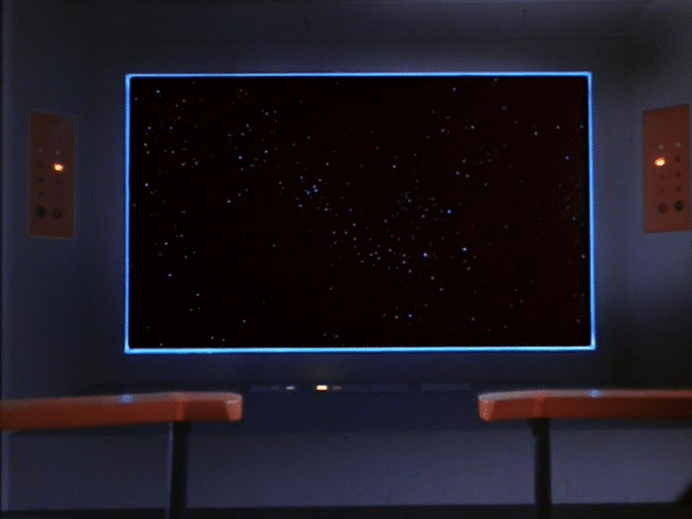 |
| Outpost Four is destroyed. |
Who did it? The Romulans, of course. Lt. Stiles had relatives in the last conflict with the Romulans and knows that their ships are painted with a Bird of Prey.
A message is intercepted and we get our first look at Romulans.
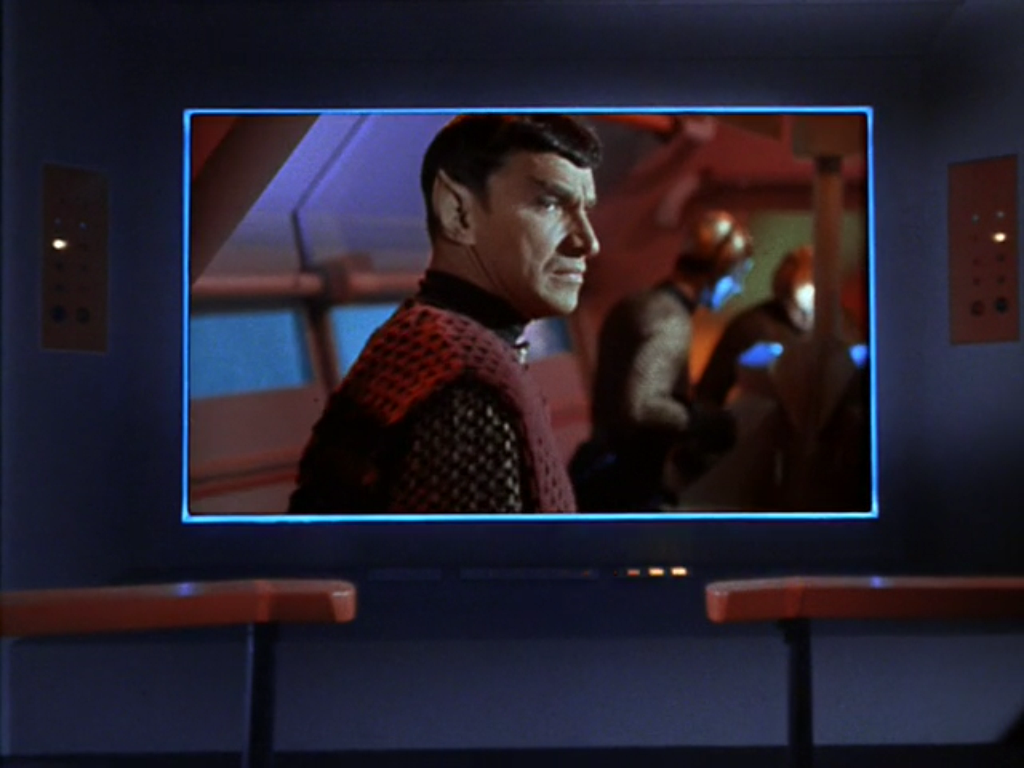 |
| Who do they remind you of? |
Kirk makes it clear to Stiles that there is no place for bigotry here. Too bad Stiles doesn't get it.
Should the Enterprise retaliate and risk galactic war? Spock thinks that they should because Romulans are related to Vulcans:
Spock: And if Romulans are an offshoot of my Vulcan blood, and I think this likely, then attack becomes even more imperative.
McCoy: War is never imperative, Mister Spock.
Spock: It is for them, Doctor. Vulcan, like Earth, had its aggressive colonizing period. Savage, even by Earth standards. And if Romulans retain this martial philosophy, then weakness is something we dare not show.
And even though the Romulans have a cloaking device, the chase is on!
Astronomy Interlude #1
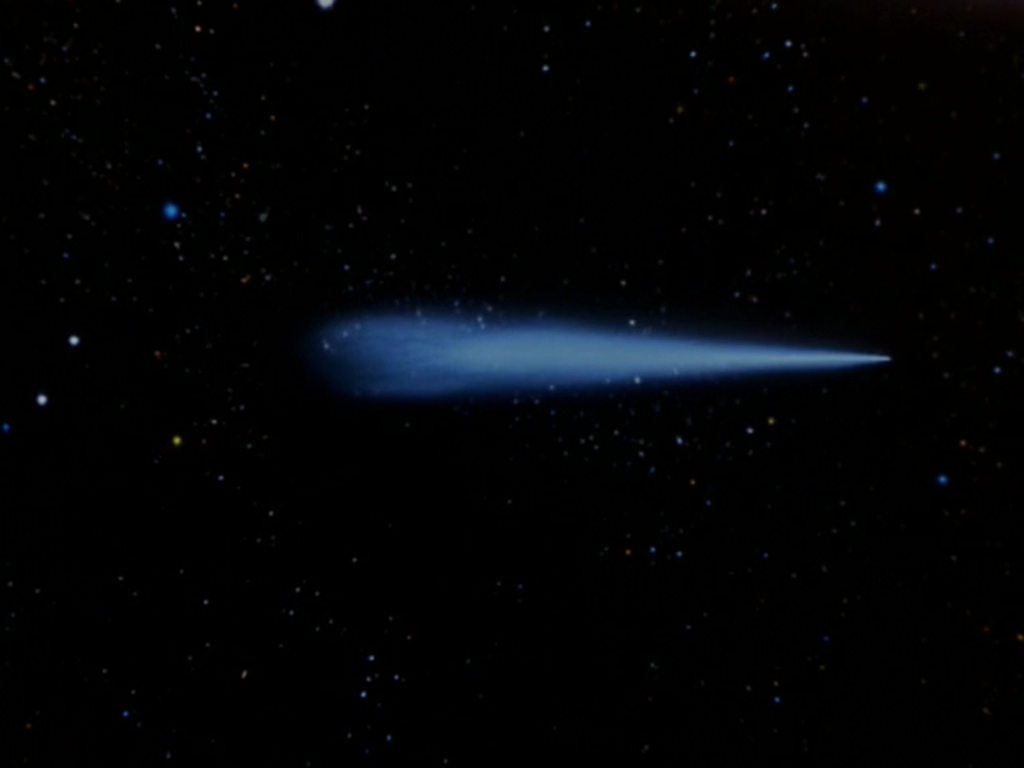 |
| Comet Icarus Four: "Behold a marvel in the darkness." |
In the depths of deep space comets are frozen solid with no atmosphere (called a coma) or tail. When the Enterprise and the Romulans encounter this comet, it shouldn't look as cool as it does with a nice tail, but I guess that would ruin the plot point.
Still, when real comets enter our inner solar system the Sun heats the ices and they can put on a nice show in the sky. Those of us in the Northern Hemisphere haven't had much to see in the way of comets since the late 90s. Below is a photo I took of Comet Hale-Bopp in March 1997 at Lake Afton Pubilc Observatory in Wichita, Kansas. (By the way, Lake Afton Public Observatory is a cool place. If you are ever in the area be sure to check it out. Check out more pics of Comet Hale-Bopp from LAPO here.)
Hale-Bopp was indeed an awesome comet. Note that it had 2 tails. This is pretty normal. The photo above shows a bluish straight tail above a brighter, curved tail. The blue tail is composed of ionized gases, while the white one is primarily dust. Hale-Bopp's dust tail was bright enough that it was easily seen in light polluted areas. Ion tails are pretty much washed out by light pollution.
For more on comets check out How Comets Work. There are pictures there from the 1910 passage of Comet Halley that remind me of the comet that was used in this episode of Star Trek.
A final point about comets. 2013 may bring three comets to our skies: Comet Lemmon and Comet PANSTARRS in March. Comet ISON may be the brightest of the three, by far, and possibly greatly outshine even Comet Hale-Bopp. I'll be posting comet updates here on the blog in the future.
Back to Trek, mostly.
When Kirk asks about the comet, Spock does not need to consult their "Table of Comets" to know that this one is ordinary, an "ionized mass, a trail of frozen vapor particles." A printed volume of comets is pretty old school, even for vintage Trek, wouldn't you agree?
At one point Kirk expresses doubts about what he is doing and McCoy tells him this:
Jim. In this galaxy, there's a mathematical probability of three million Earth-type planets. And in all of the universe, three million million galaxies like this. And in all of that, and perhaps more, only one of each of us. Don't destroy the one named Kirk.Our perception of the universe has changed quite a bit since the writers penned McCoy's little speech. How does it hold up today? Back in the 60s the number of confirmed "exoplanets" - planets beyond our own solar system was zero. Today the number is in the thousands, and growing rapidly. Thankfully, the number of known planets has grown to the point where actual statistics can be done. While we cannot travel at warp speed across the galaxy, we can estimate the total number of Earth-type planets in the Milky Way. Numbers released earlier this week estimate that there might be 4.5 billion planets like our Earth in our galaxy. McCoy certainly got that way wrong, didn't he?
How did he do on galaxies? McCoy said that there was "three million million galaxies". That's 3,000,000,000,000 or 3 trillion galaxies. This post from Discover, suggests that the actual number should be about 176 billion galaxies in the universe, but also that the Hubble data may actually under estimate the number and that with future instruments, like the James Webb Space Telescope the estimated number of galaxies in the universe may jump to a trillion. If so, then McCoy's estimate is only off by a factor of three, which in astronomy is often pretty good. I should also point out that the estimate of galaxies above is for the observable universe. The entirety of the universe is bigger than we can see, so the count really is likely several times larger than 176 billion, even without speculating what we might learn with the James Webb Space Telescope.
Back to Trek.
The ships maneuver and battle. At one point they each lay still and, strangely enough, everyone must keep quiet to avoid detection by each other. Details like this are horribly wrong (sound doesn't travel through space you know), but help to give this episode a feel as if the starships were two submarines in battle.
Rant: Why is it that ships in space, when damaged, are tilted? Are they taking on water? Is there some galactic frame of reference with a preferred direction for "up" that they must follow?
Anyway, shots are exchanged. Both ships are damaged and in the big conclusion there is a phaser coolant leak aboard the Enterprise that incapacitates Stiles and Tomlinson who are manning Phaser Control. Spock has to rush into the room to fire off the shots that cripple the Romulan ship. He rescues Stiles (in spite of his feelings toward Spock) but Tomlinson will never be getting married as Spock was unable to save him. I am not sure why his bride to be wasn't in the room too, as earlier in the episode they both worked there. Shouldn't she be dead too? Maybe the Romeo and Juliet ending would have worked better (I know, there was no suicide here.)
All-in-all it this is a solid episode of Trek. Guest star Mark Lenard does a great job as the Romulan Commander. He is given some great lines:
"Danger and I are old companions." and, speaking to Kirk at the end, "I regret that we meet in this way. You and I are of a kind. In a different reality, I could have called you friend."
And at least one line that doesn't make any sense at all: "Centurion, I find myself wishing for destruction before we can return." Wait. What?
That aside, it is a fine episode. Composer Fred Steiner wrote only about five and a half minutes of music for this episode (the rest is tracked from other episodes), but it is good stuff and includes a menacing theme for the Romulans: hear it here from La-La Land Records.
Also, Five Year Mission did another cool song for this episode, it is worth checking out and you can watch the full episode here from Star Trek.com.
Next up is What Are Little Girls Made Of?
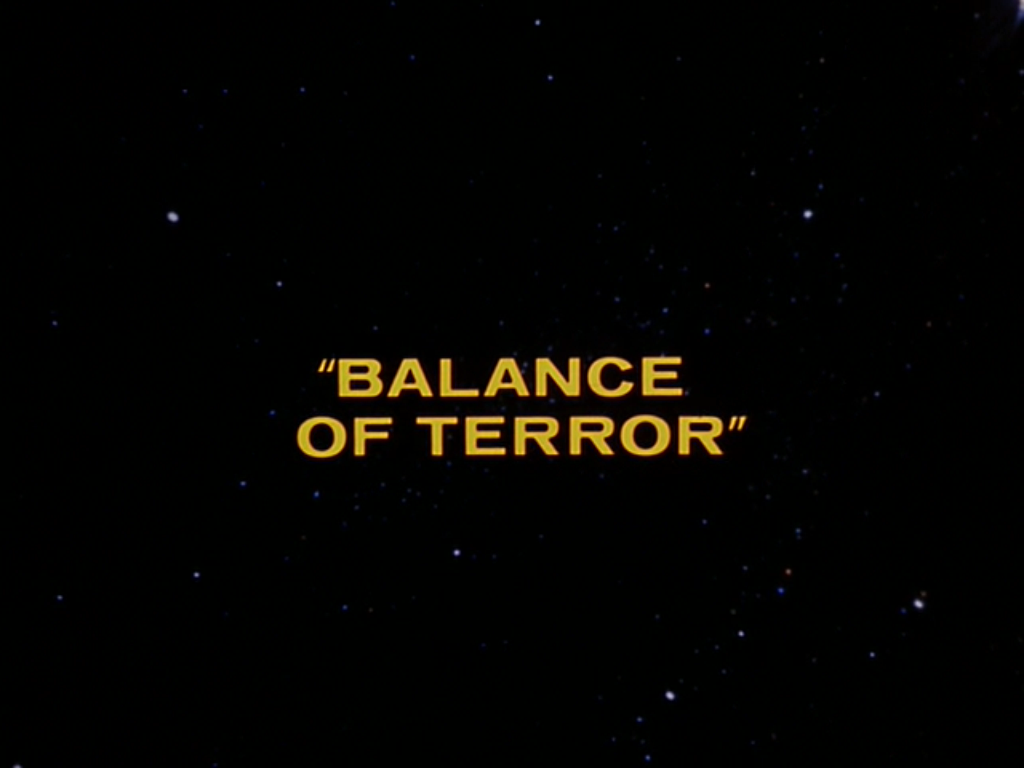
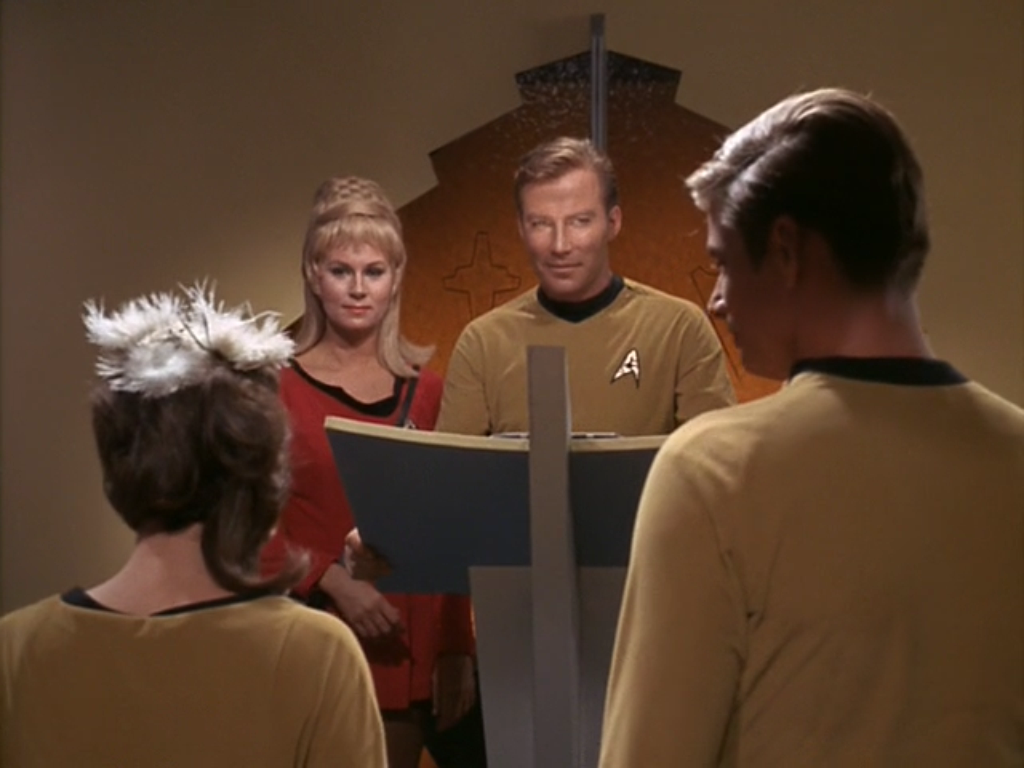
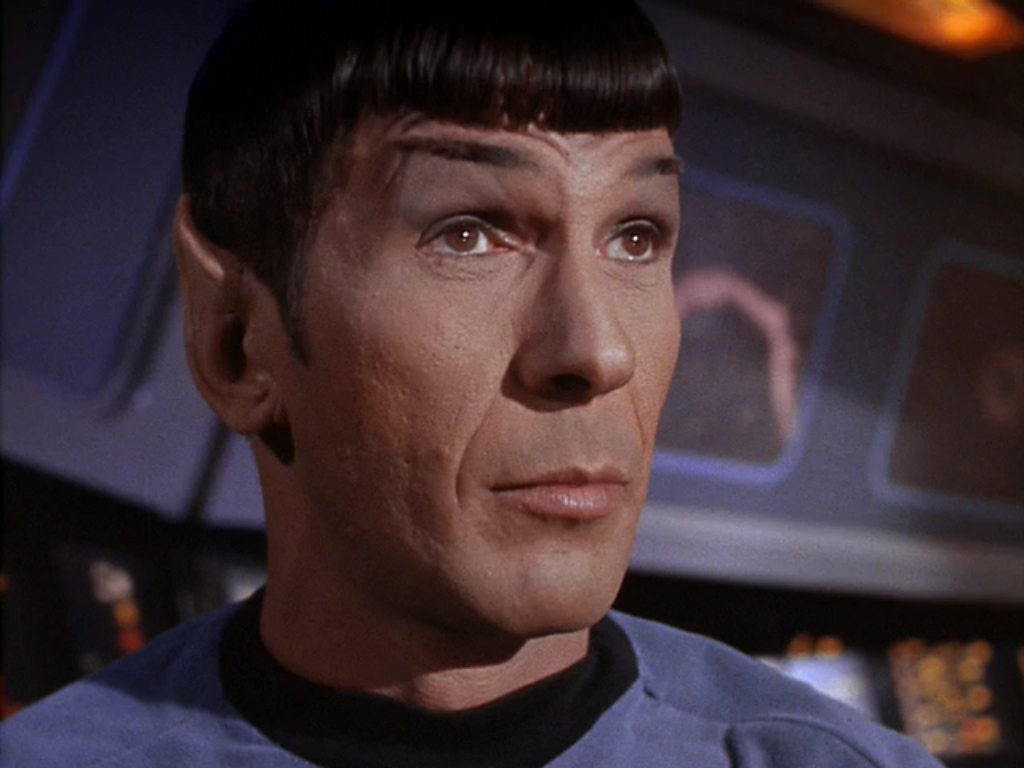
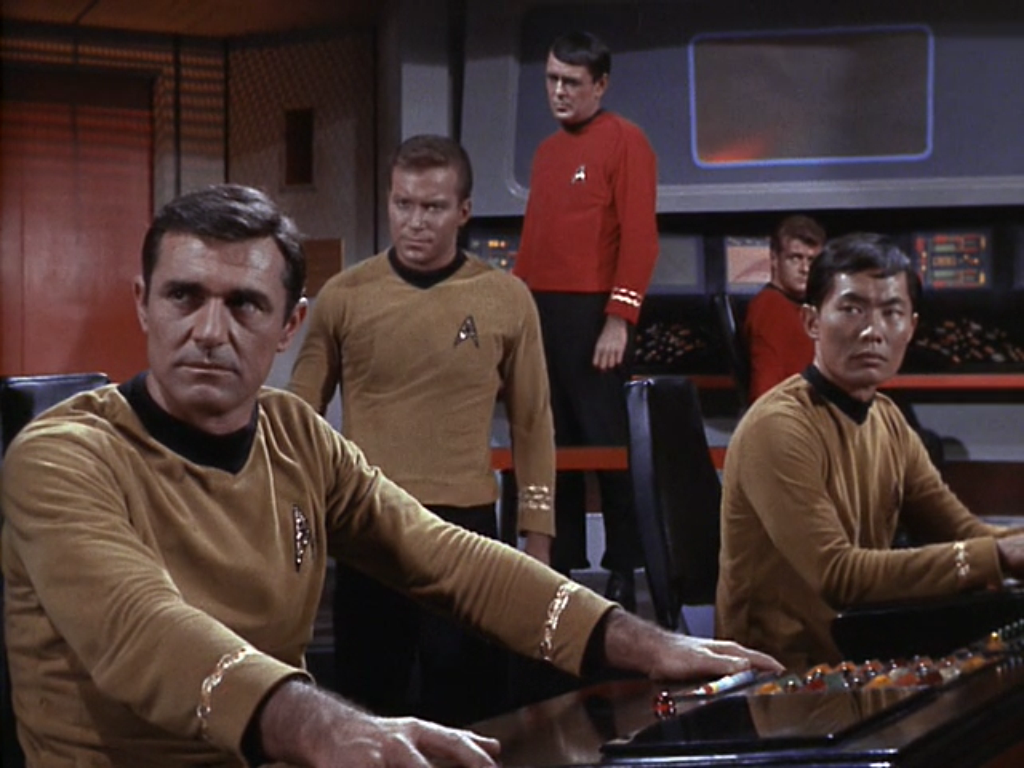
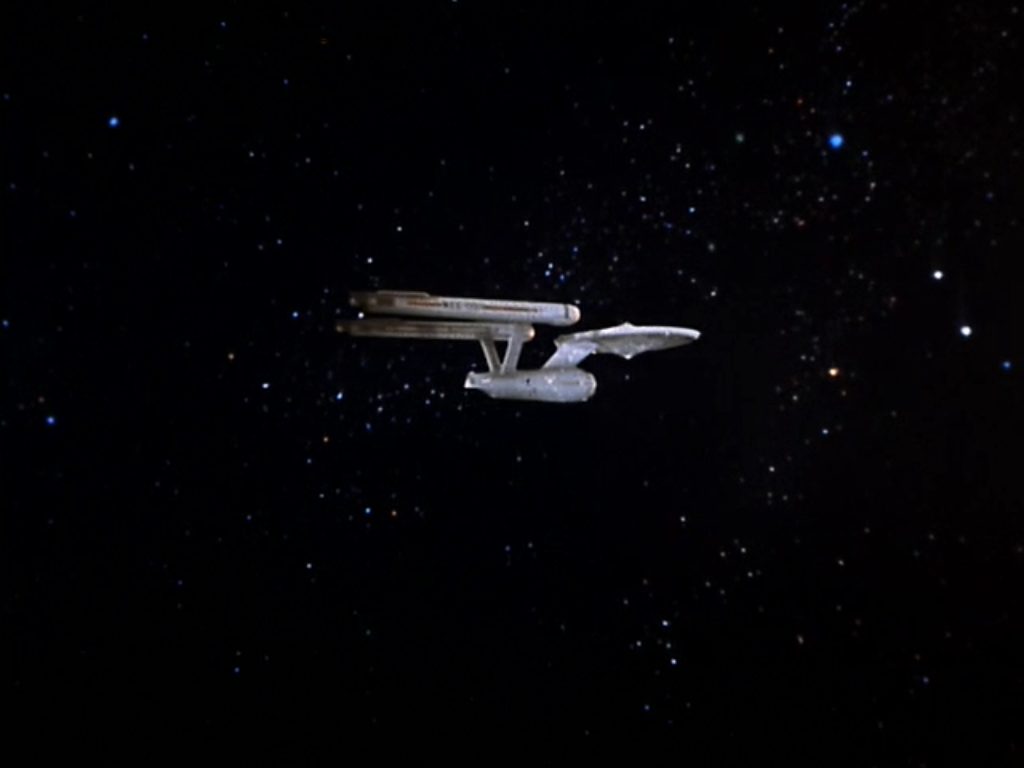
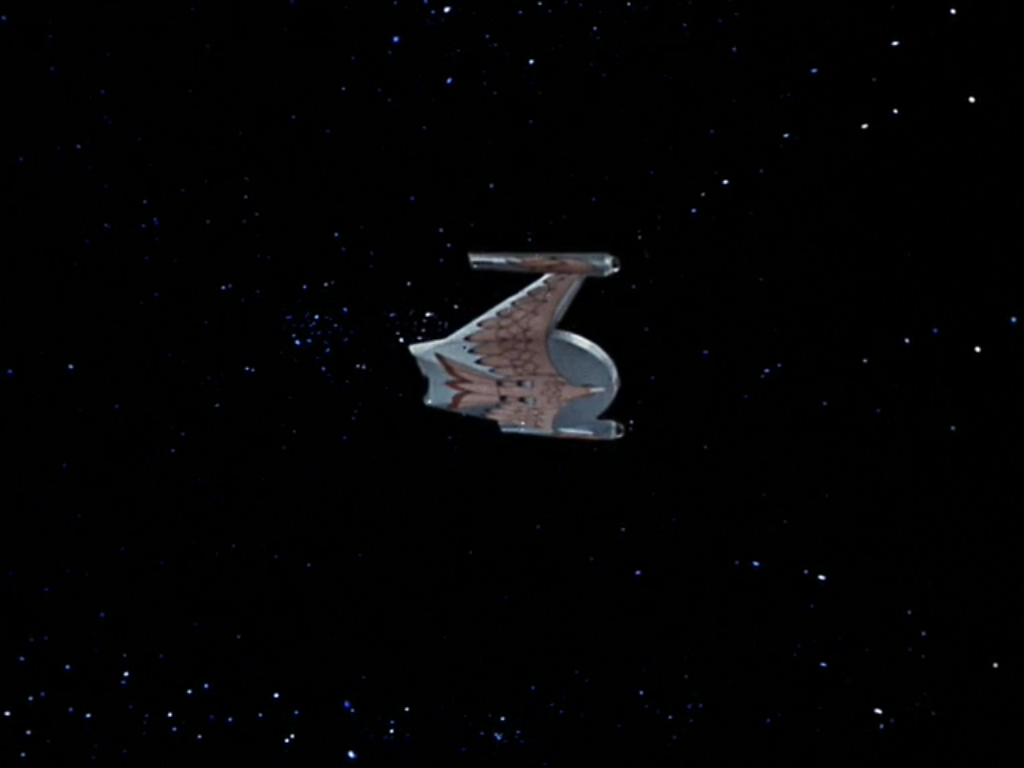
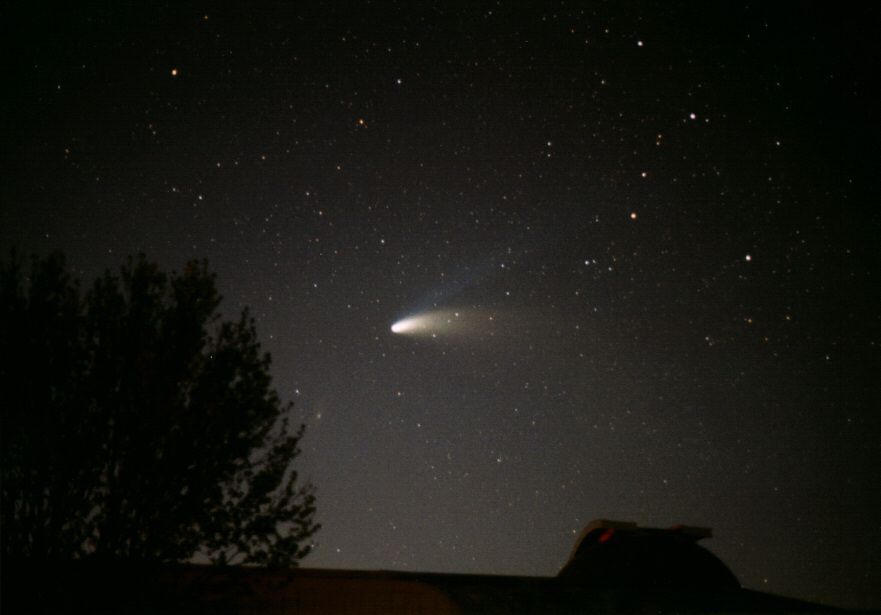
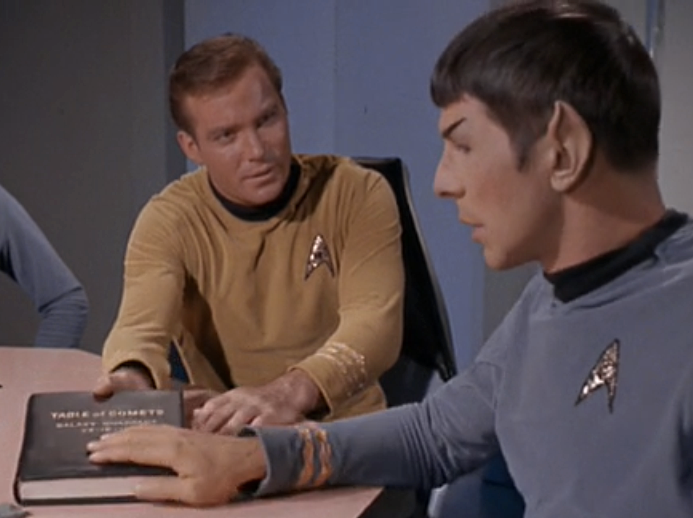
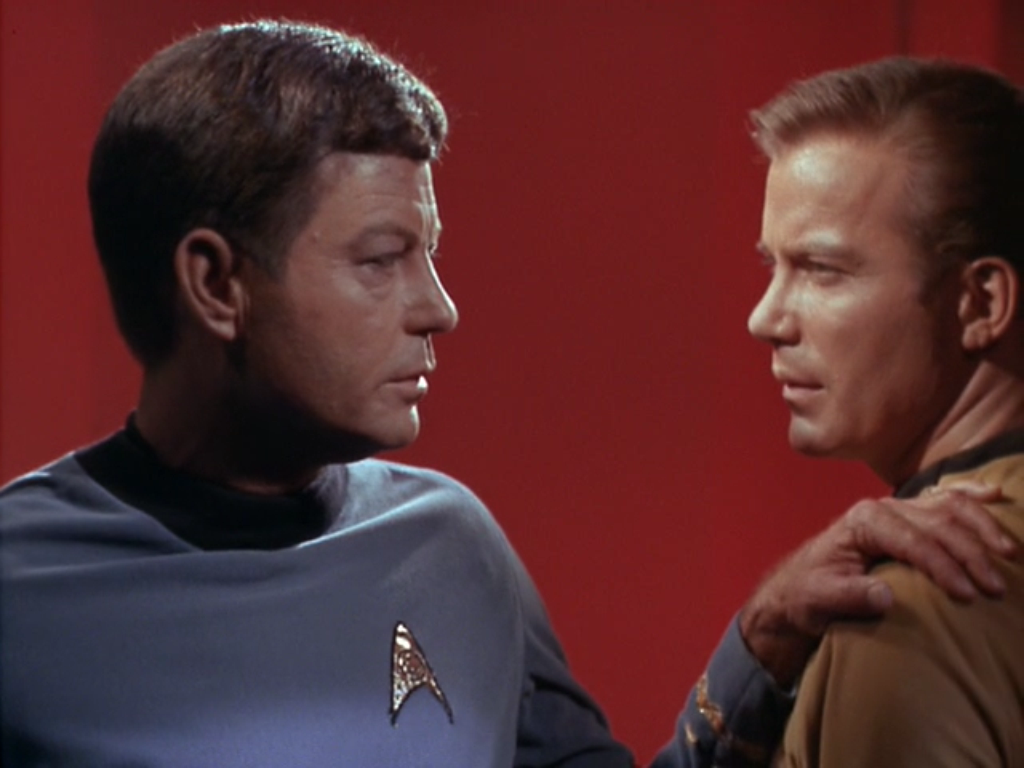
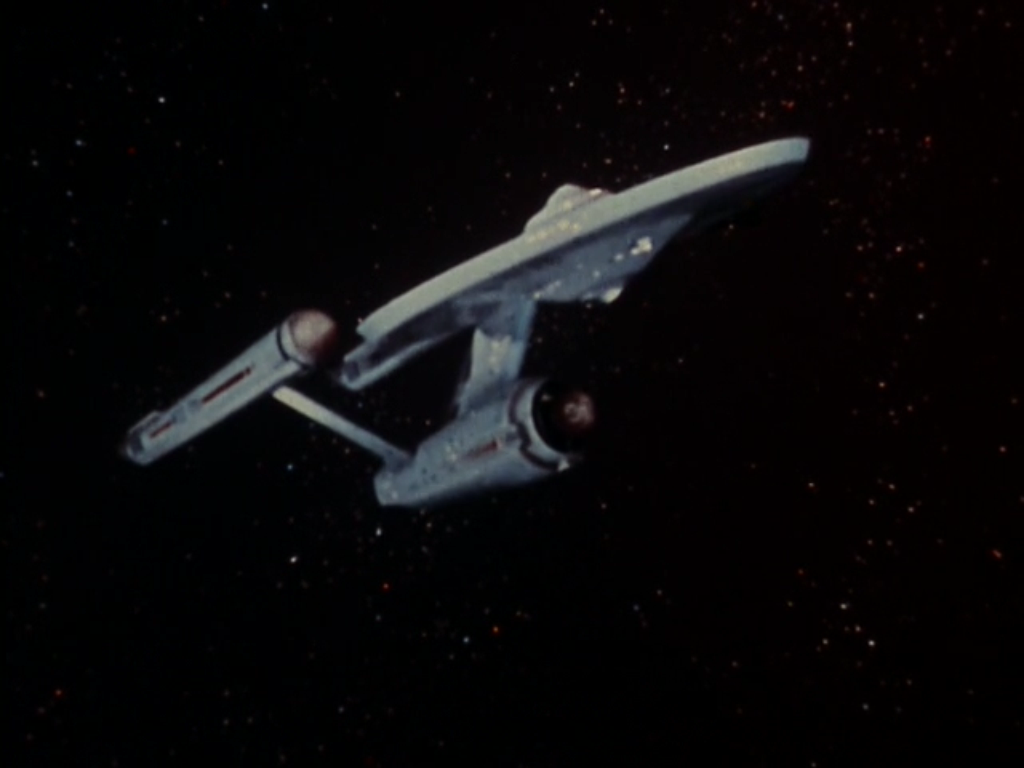
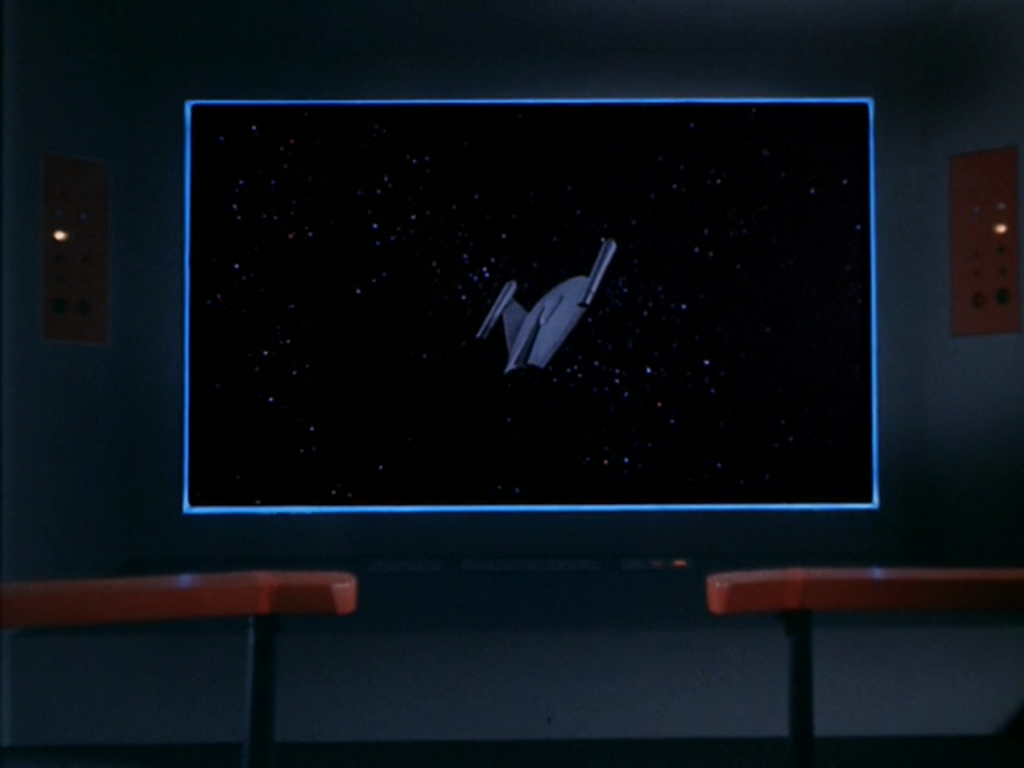
No comments:
Post a Comment